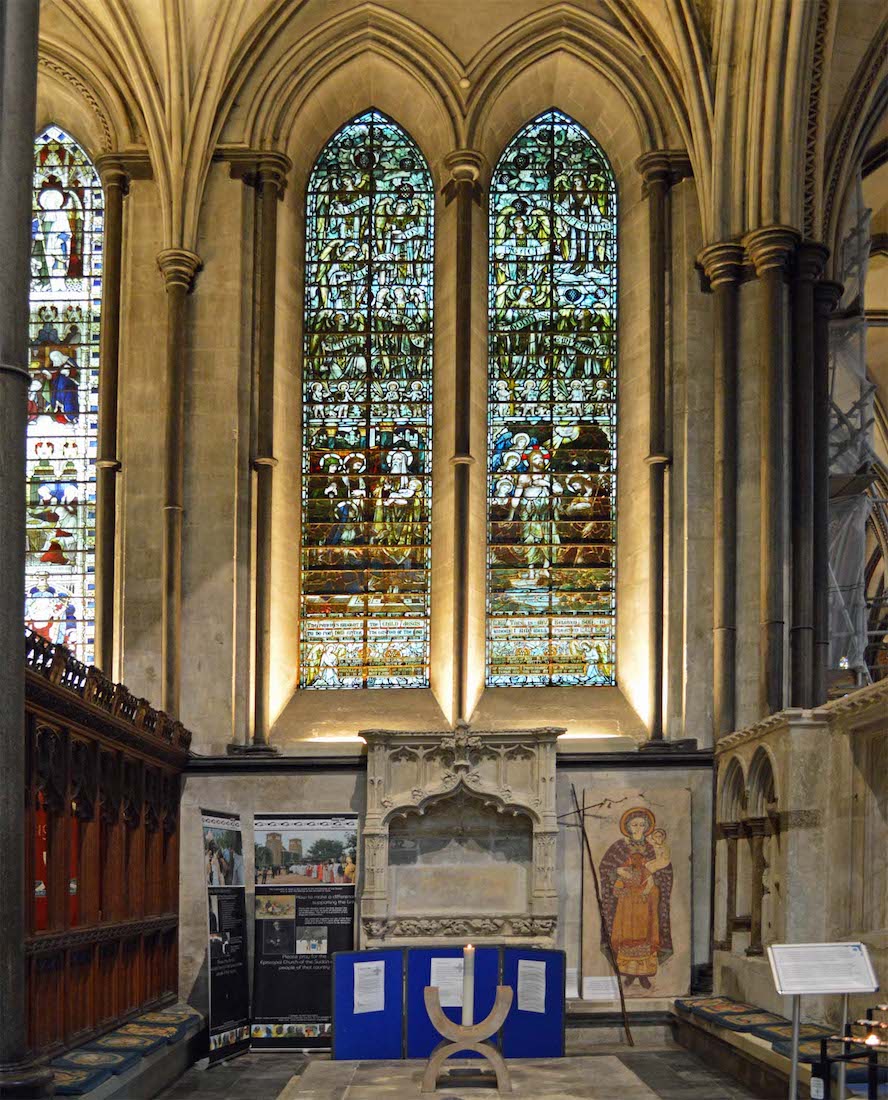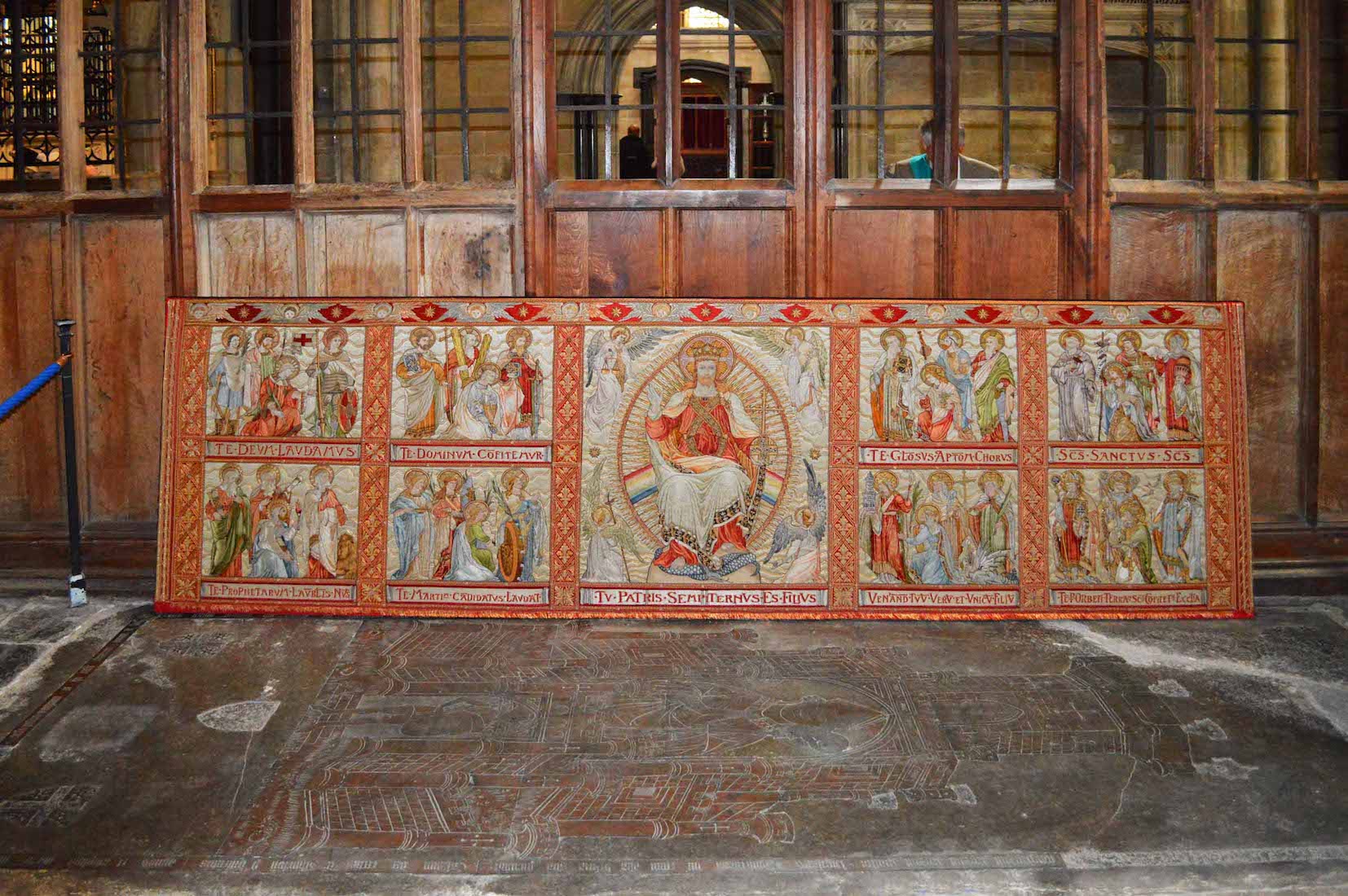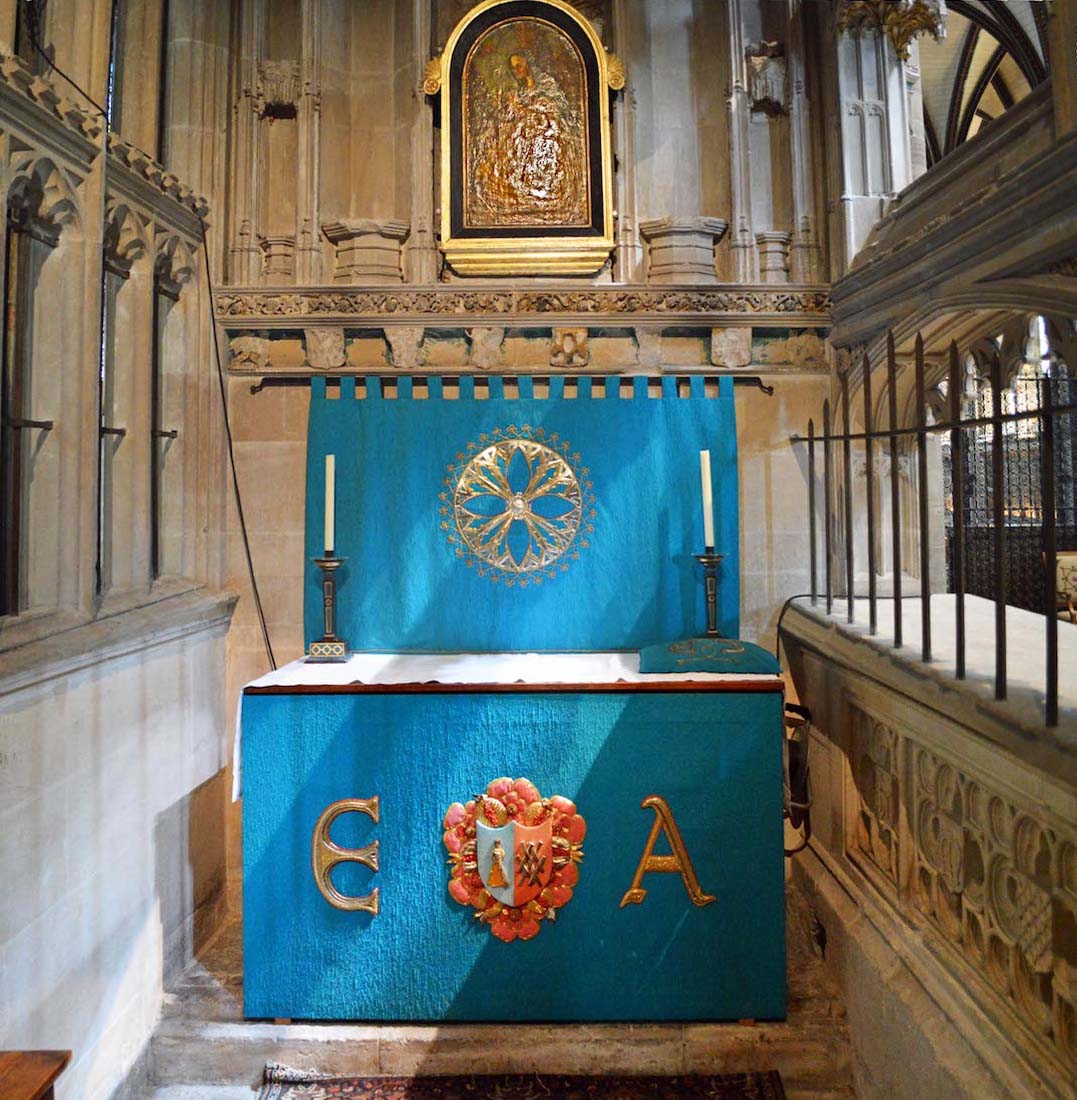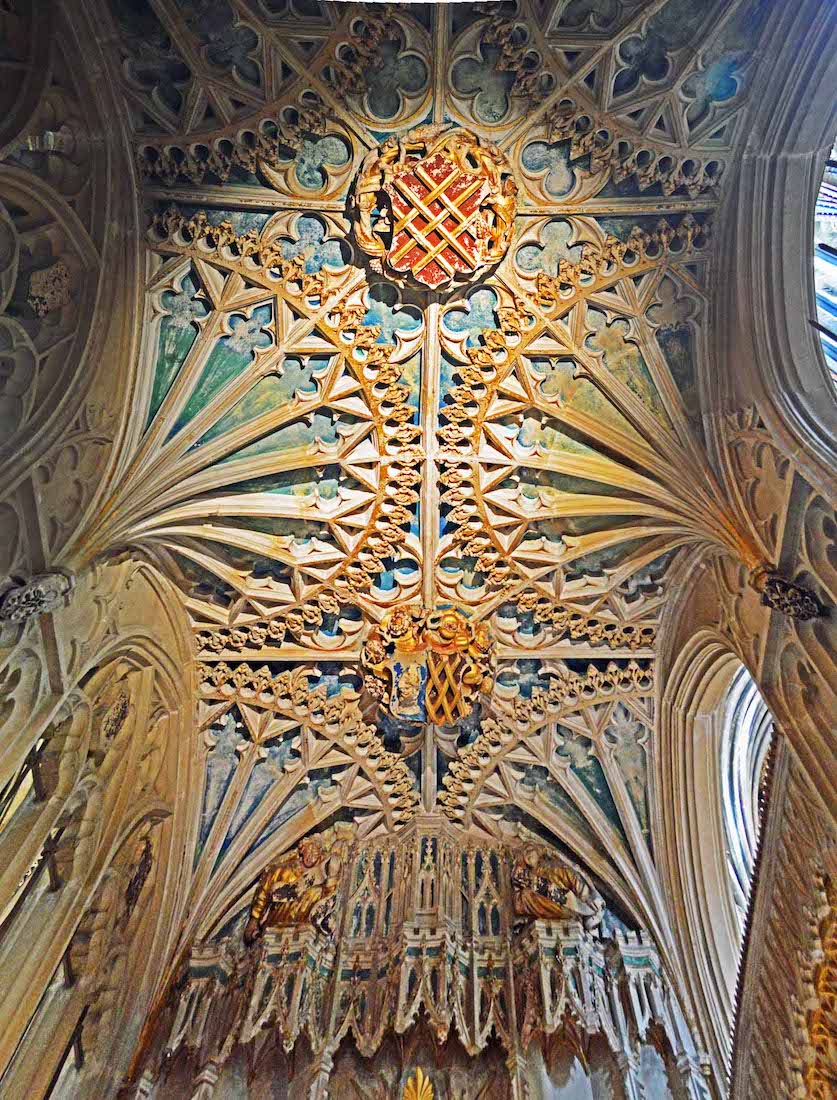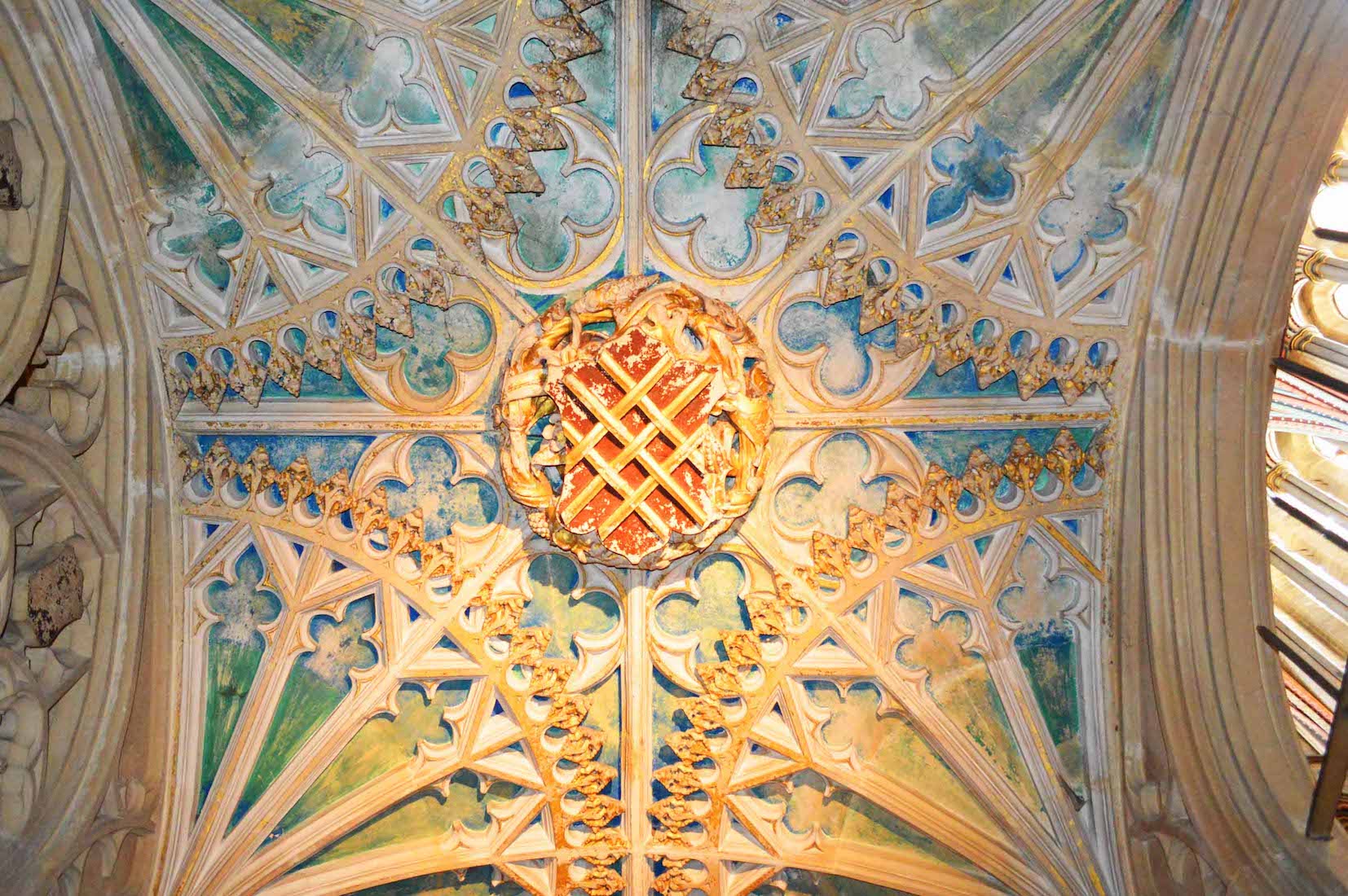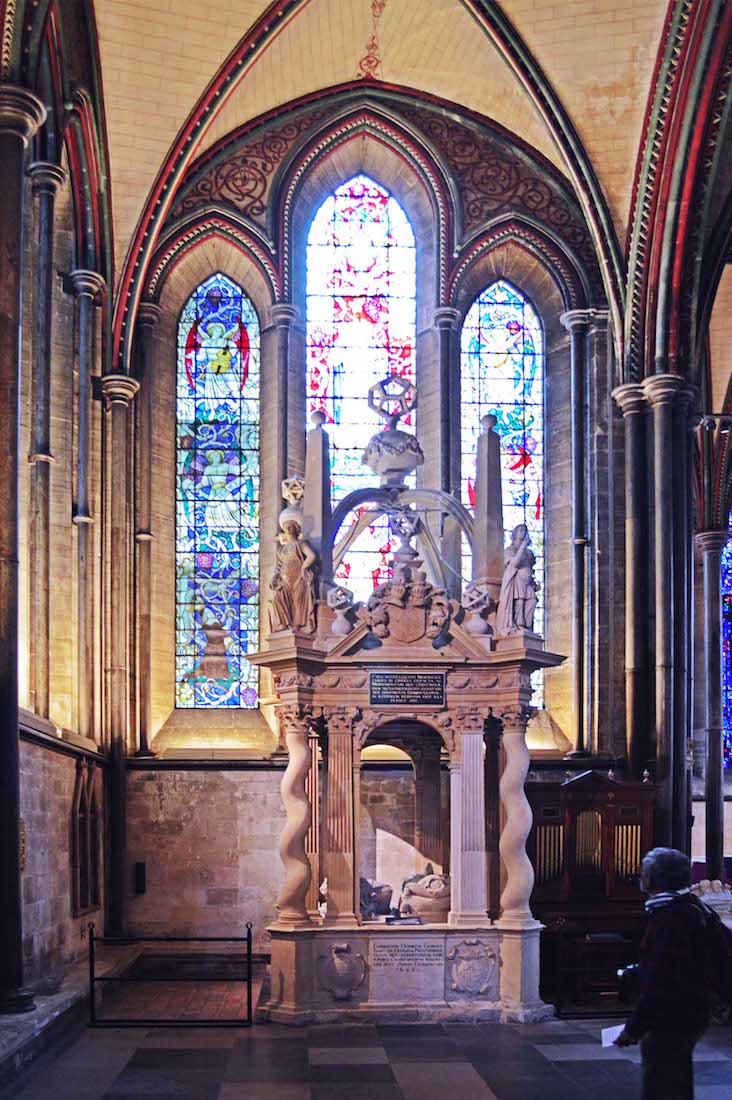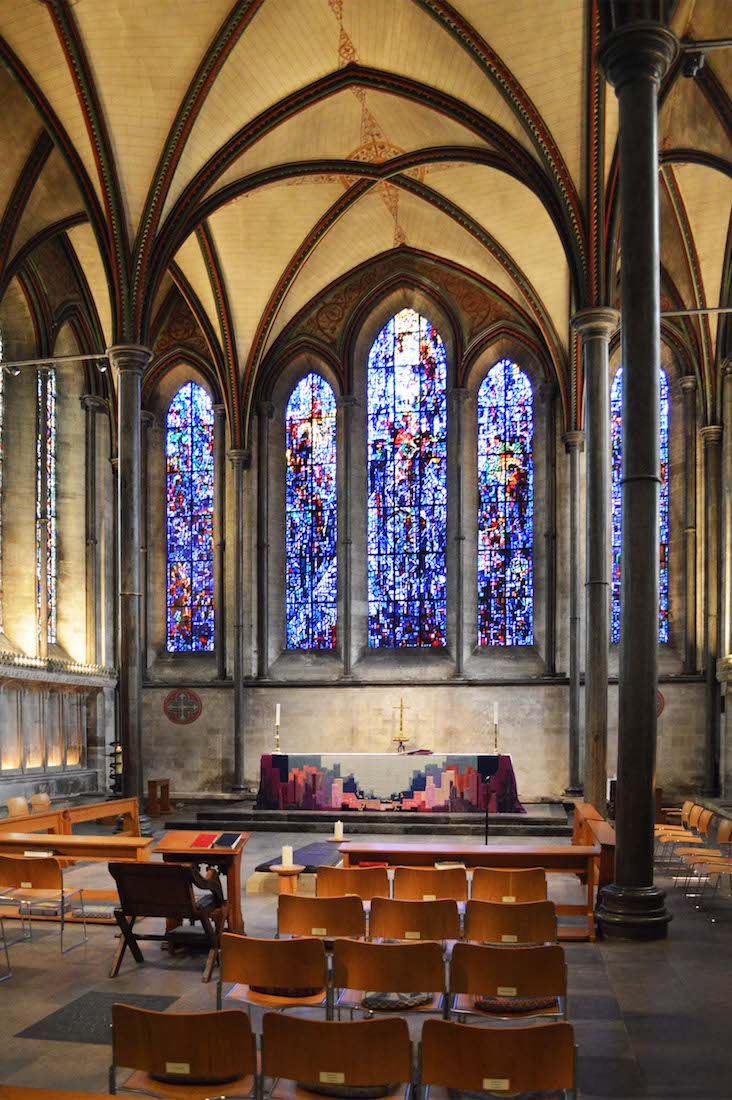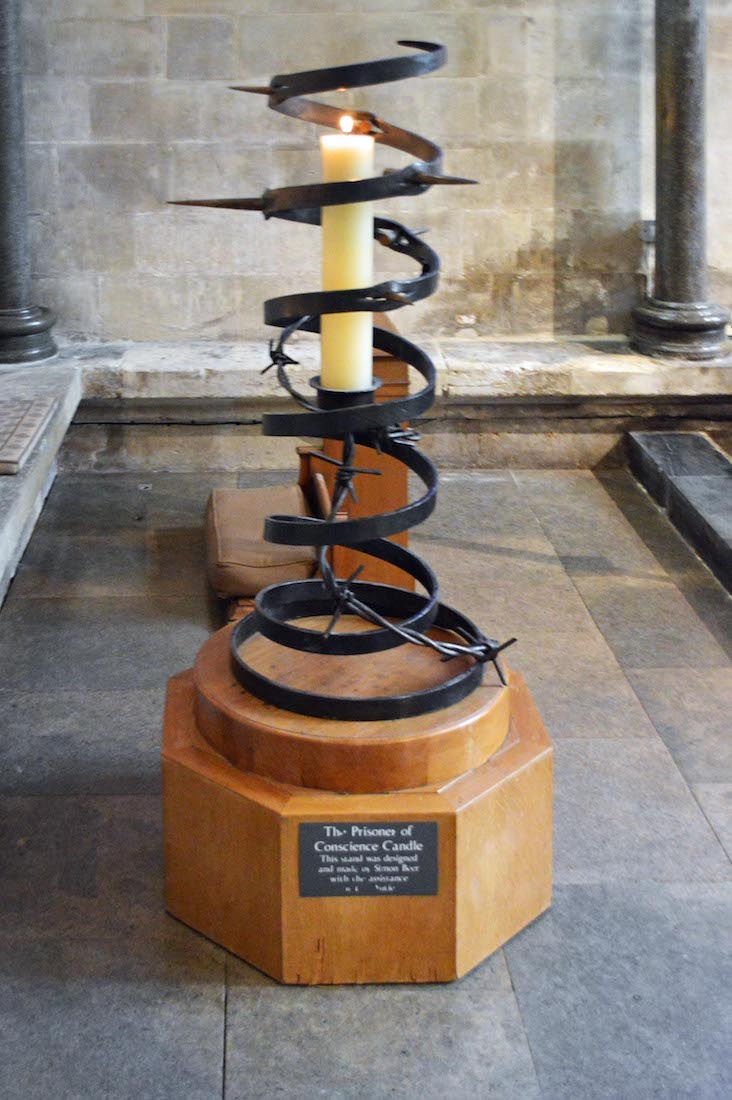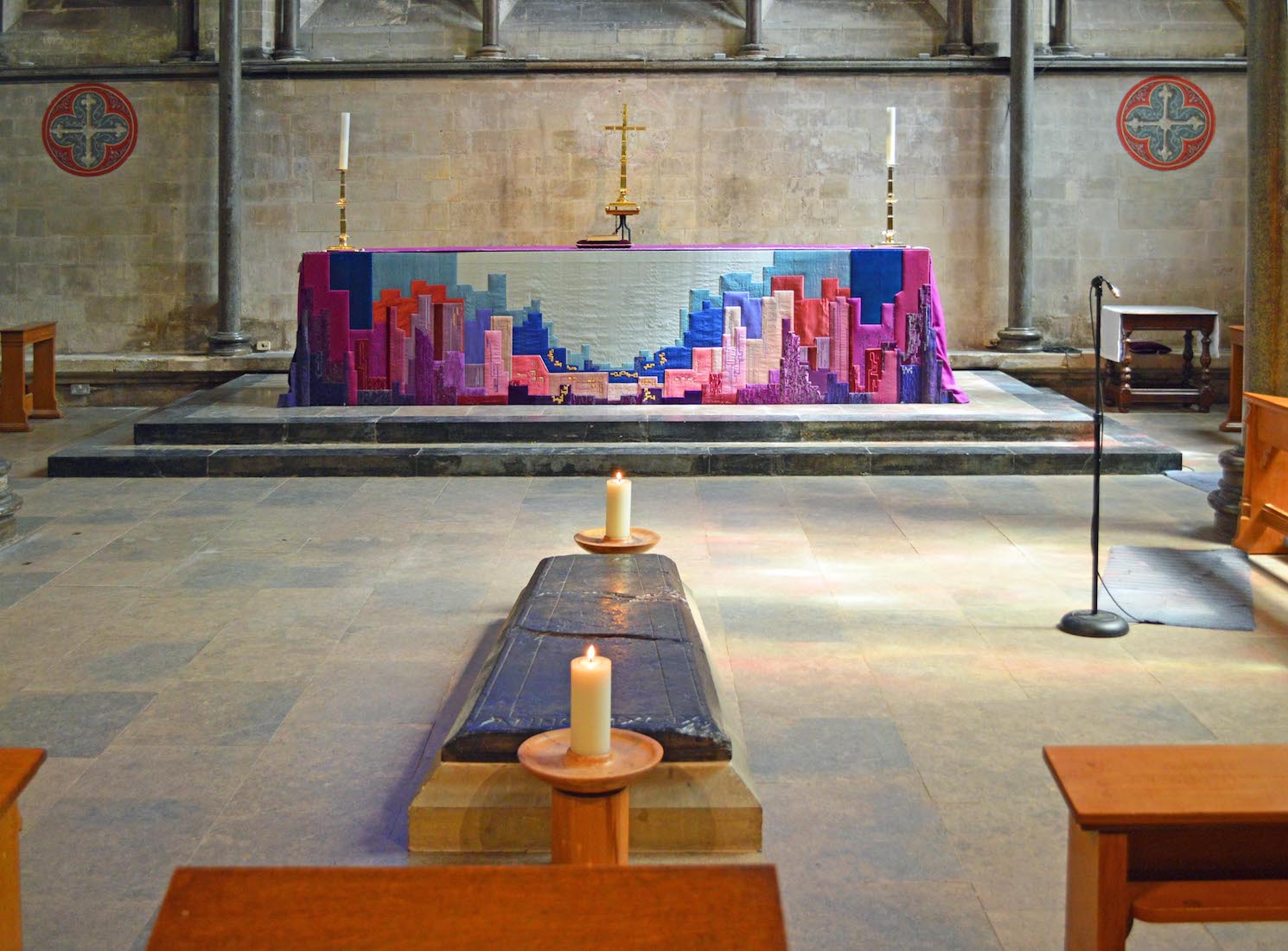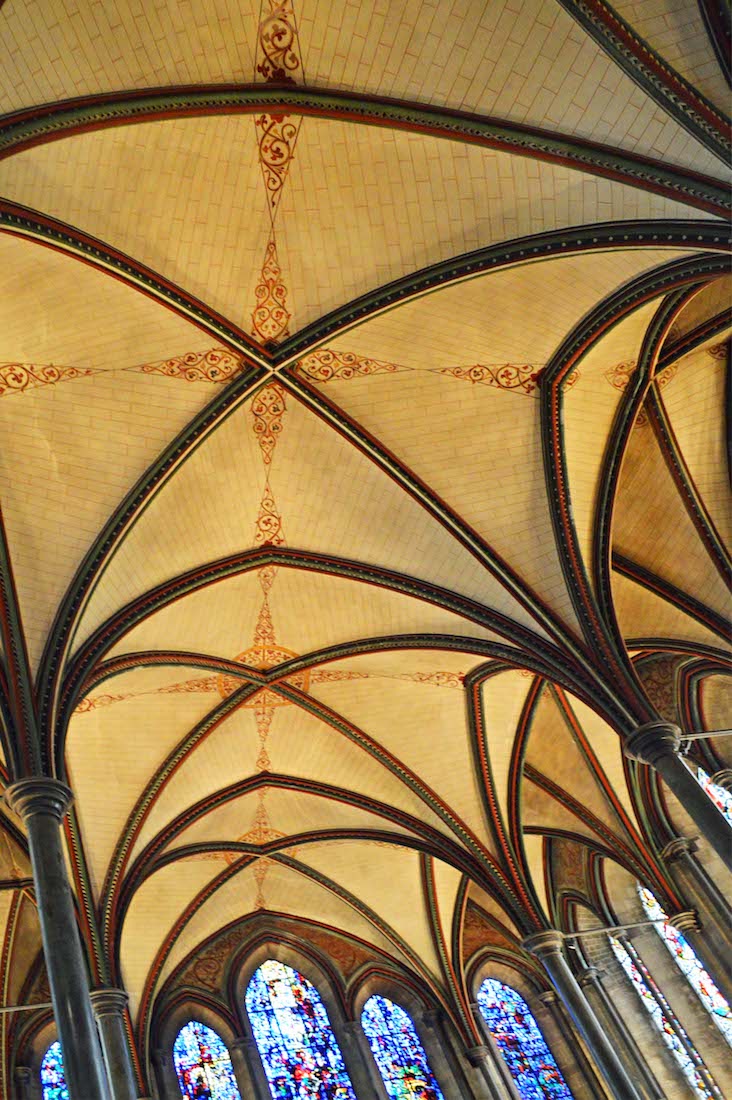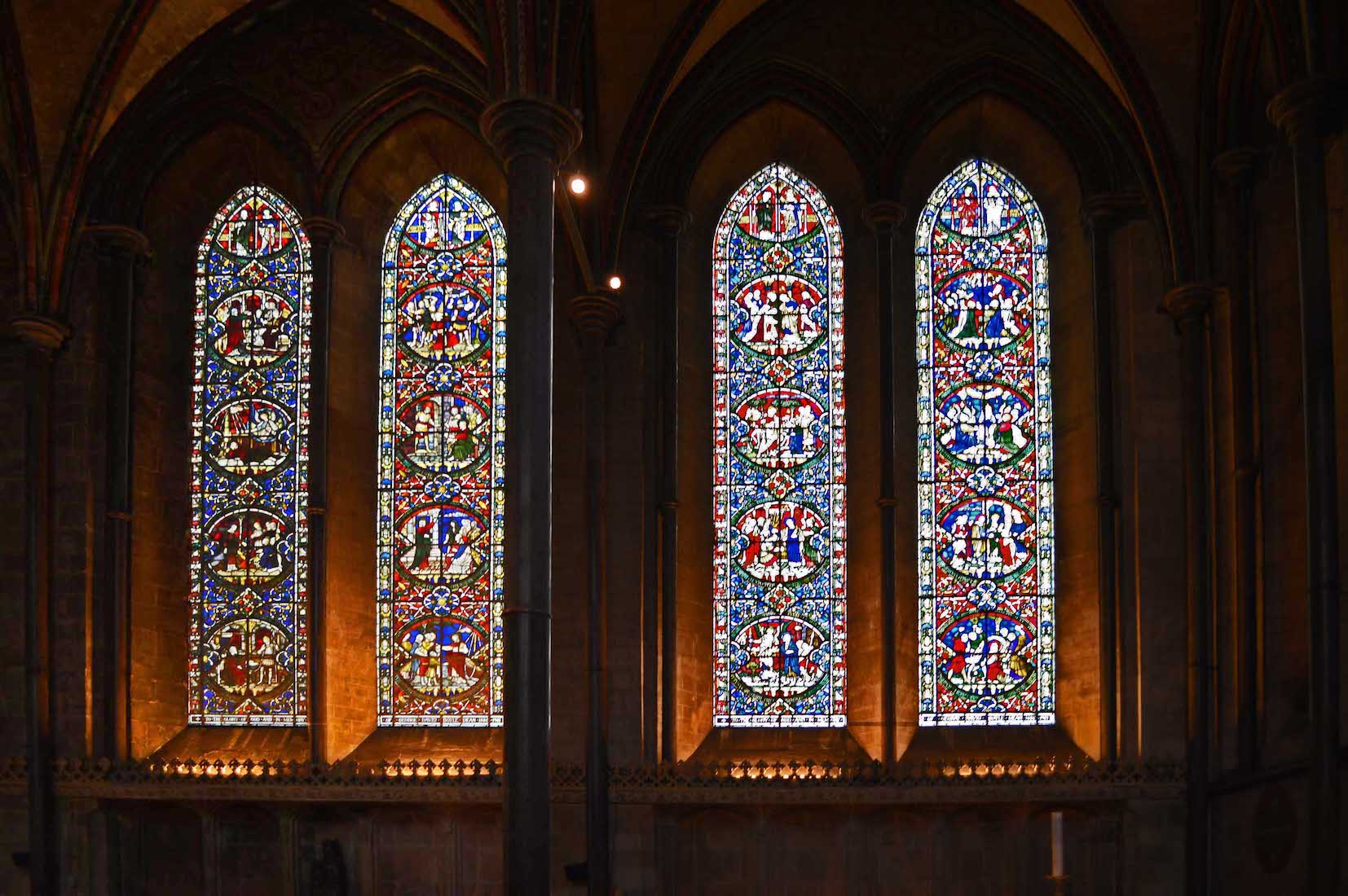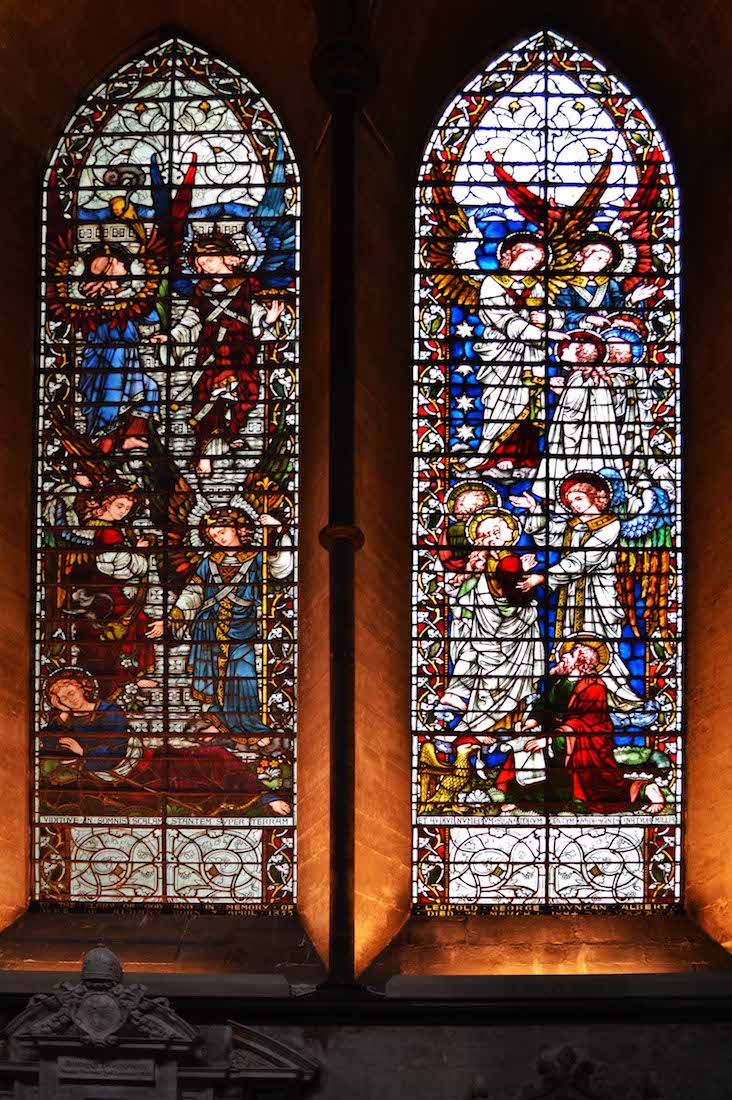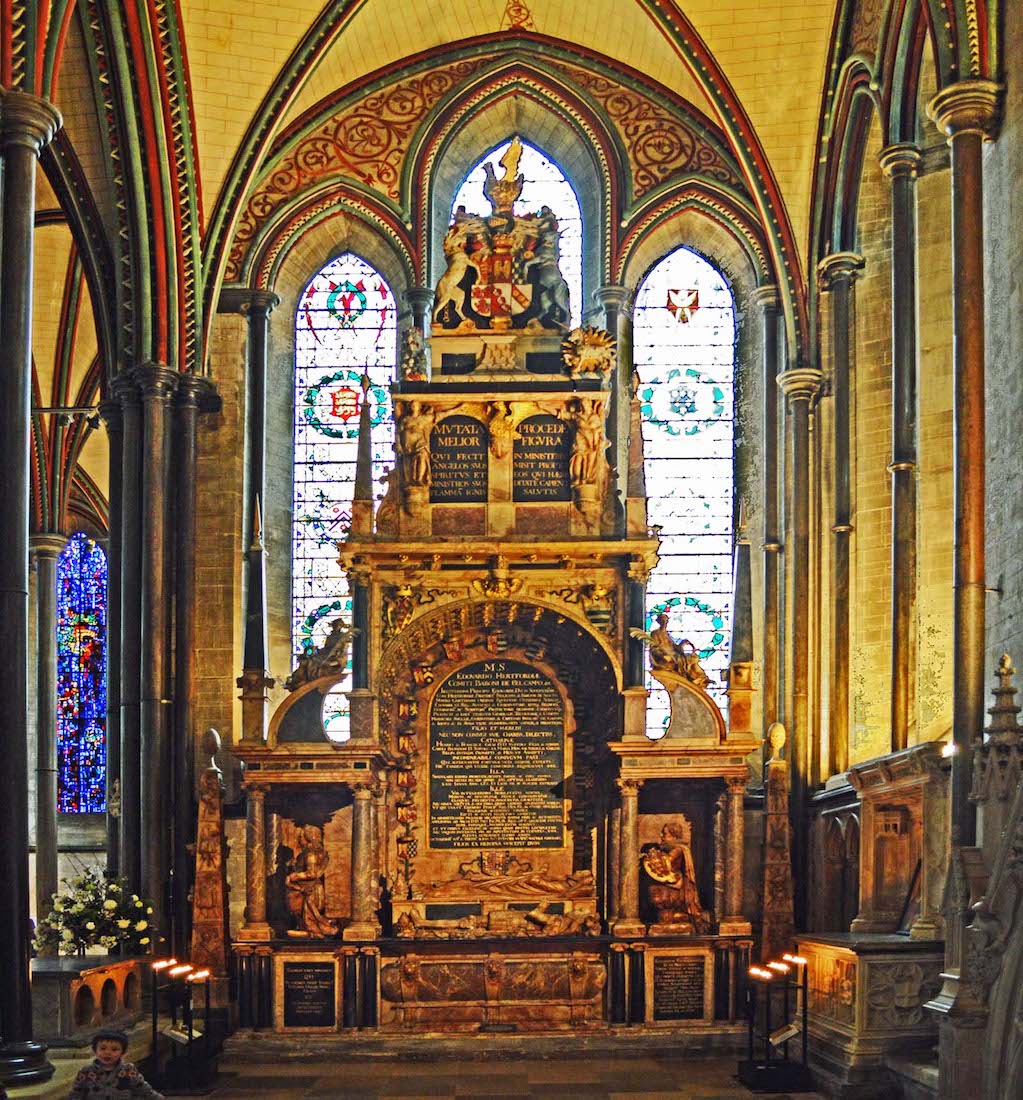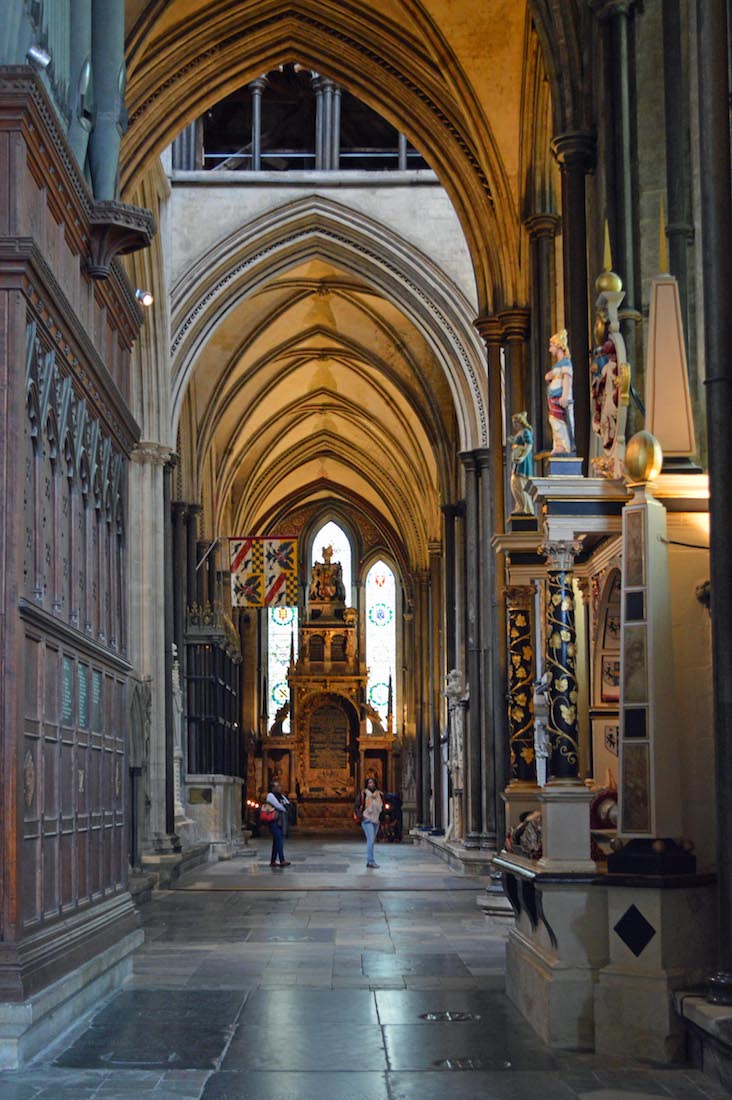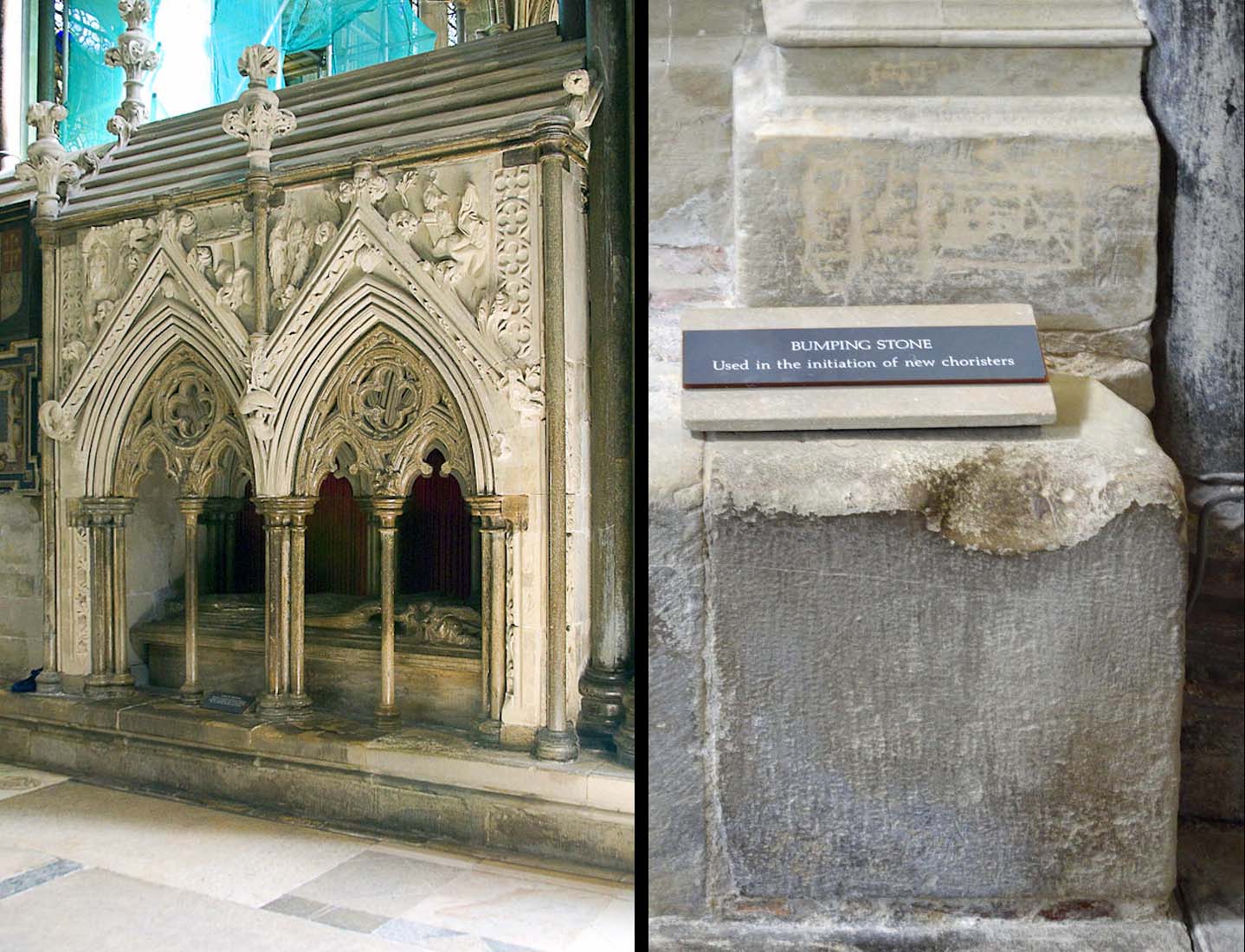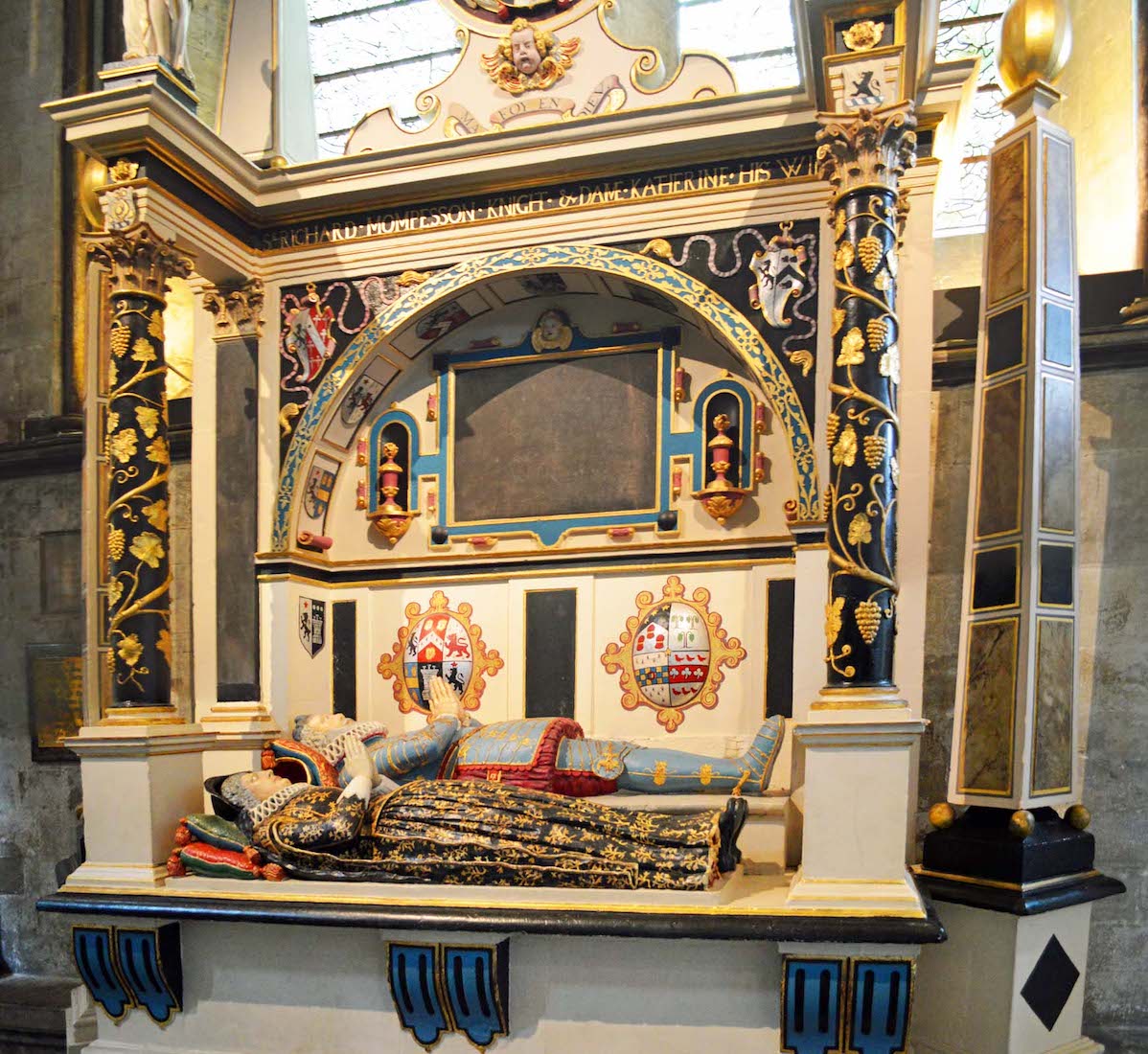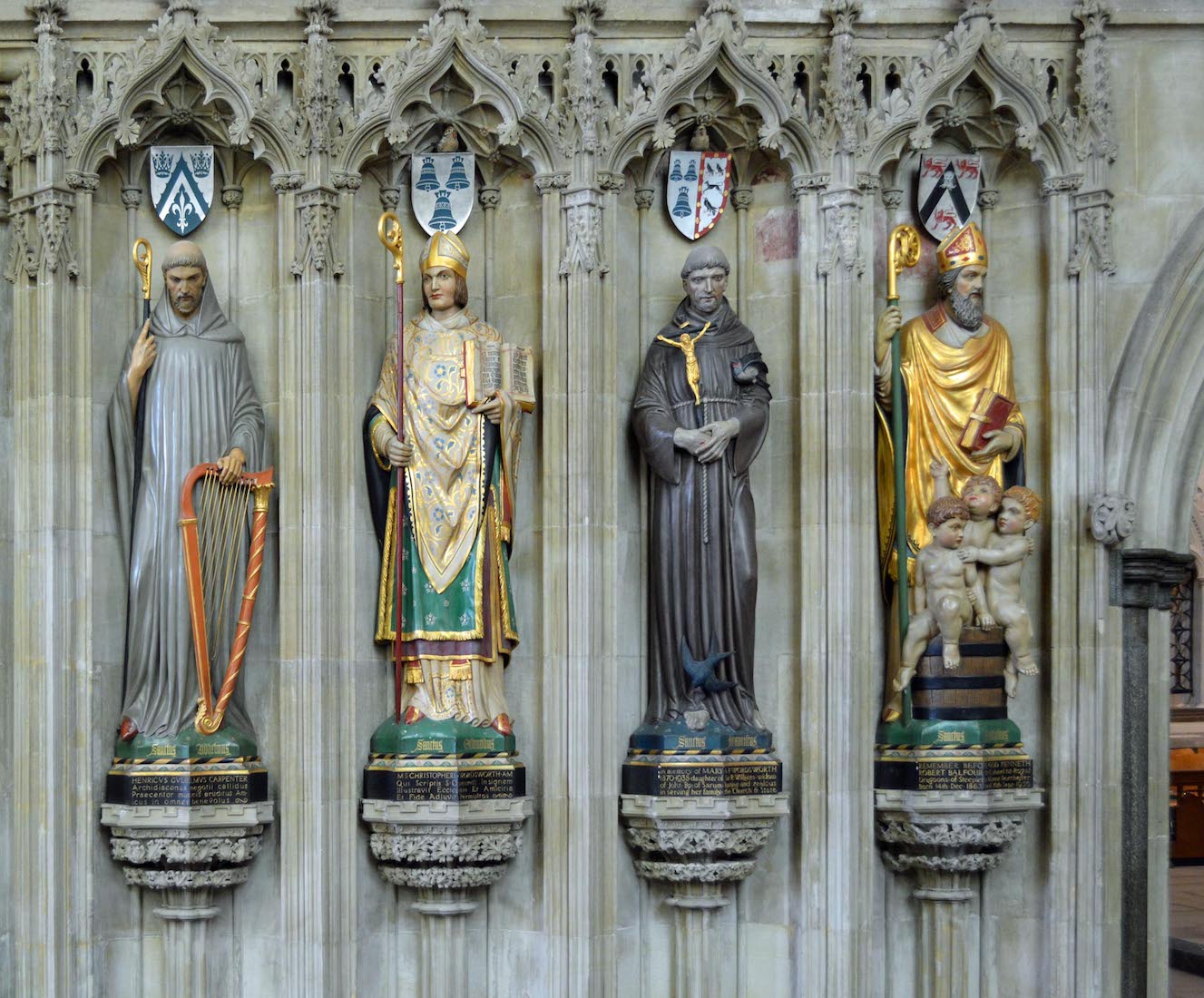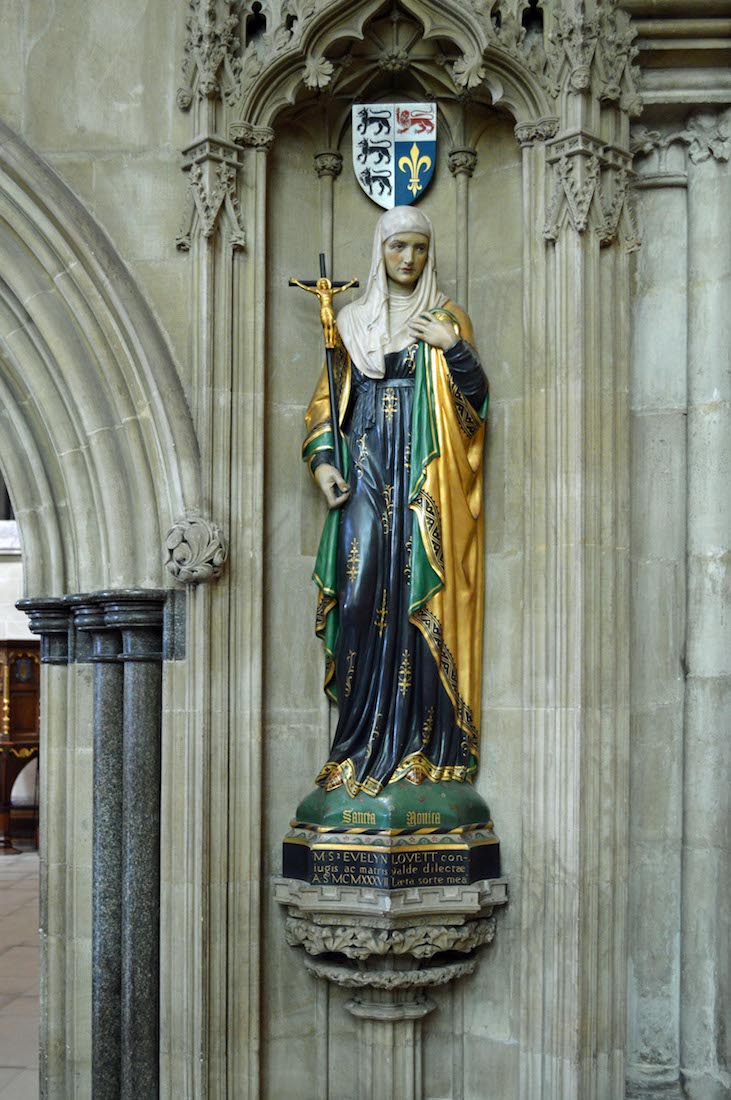61. EAST MORNING CHAPEL
The East Morning Chapel has its own altar, window and character. The window panes show the Blessing of the Child Jesus in the Temple (left) and the Baptism of Jesus (right).
62. TAPESTRY
On our right is a magnificent brass in the floor (before the altar cloth) commemorating Rober Wyville, Bishop of Salisbury from 1330 to 1375.
64. AUDLEY CEILING
The stone altar and the statue of the Virgin in it were destroyed in 1548. The chapel has a highly decorated and colourful ceiling, complete with ornamental bosses.
65. AUDLEY BOSS
The ornamental bosses are a feature of many Gothic cathedrals. The size of these creations is often not appreciated because of the great height of the ceilings.
66. GORGES’ TOMB
We proceed to the East end of the North quire aisle, coming to the Gorges Monument. Sir Thomas Gorges lived from 1536 to 1610. He was an Elizabethan courtier and Groom of the Chamber to Queen Elizabeth I. The Gorges Monument (1635) is the tomb of Helena, Marchioness of Northampton and her husband Sir Thomas. Each side of the elaborate canopy above the tomb displays two cuboctahedra and an icosahedron. The monument as a whole is crowned by a celestial globe with a dodecahedron on top. It features stone polyhedra in Leonardo's style.
69. TRINITY CHAPEL WINDOWS

The Prisoners of Conscience window has many inset faces representing people of different faiths and races. It was designed by Gabriel Loire and installed in 1980. The central section shows (abstractly!) Jesus on a dark red cross with blood dripping from his outstretched arms into two communion chalices. The ascending golden spiral expresses the theme of Resurrection.
70. TRINITY ALTAR
The long chapel altar sits below the main window.
71. CHAPEL CEILING
The vaulted ceiling of the chapel has a finely painted decoration.
72. TRINITY NORTH WINDOWS
Although the blue East window of the Trinity Chapel catches the eye, the chapel also has stained glass to the North (shown here) ...
73. TRINITY SOUTH WINDOW
... and South (shown here).
74. DUKE OF ALBANY WINDOW
We now walk across to the East end of the South Quire Aisle. Nearby is the Duke of Albany window. The window illustrates Jacob’s dream, recorded in the Old Testament.
75. HERTFORD TOMB
At the East end of this aisle we find this very large decorative marble tomb, the Hertford Tomb. Unusually, Lady Catherine Grey is positioned higher than her husband Edward Seymour, because of her family status. Lady Catherine’s sister, Lady Jane Grey, was proclaimed Queen of England for nine days before being executed in 1554, aged 17.
76. SOUTH QUIRE AISLE
We are now in the South quire aisle. Looking back towards the Hertford tomb, we see to the immediate right the grey arches of the Bridport tomb [Wikipedia photo].
77. DE BRIDPORT TOMB AND BUMPING STONE
Giles of Bridport was archdeacon of Berkshire in the diocese of Salisbury as well as Dean of Wells before being elected bishop in 1256 and consecrated in 1257. He died in 1262. • Almost directly opposite the de Bridport tomb is the entry to the Quire, and nearby, the traditional Bumping Stone. Here there is a bumping ceremony where each new (boy!) chorister has his head bumped against this ancient stone.
78. MOMPESSON TOMB
Closer on the right is the grand and colourful Mompesson Tomb. Richard Mompesson of Salisbury, Wiltshire, was an English politician. He was a Member (MP) of the Parliament of England for Devizes in 1593. He died in 1627.
79. QUIRE AISLE SAINTS
Before we enter the quire, we notice this delightful group of saints.
80. ST MONICA
A little on the outer stands one more saint, St Monica. She lived AD 331 – 387), and was also known as Monica of Hippo. She was the mother of St. Augustine of Hippo. She is remembered and honored for her outstanding Christian virtues, and her prayerful life dedicated to the reformation of her son, who wrote extensively of her pious acts and life with her in his Confessions. Popular Christian legends recall Saint Monica weeping every night for her son Augustine.


